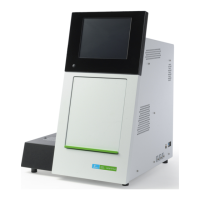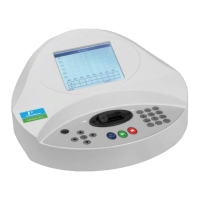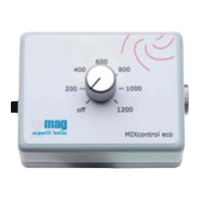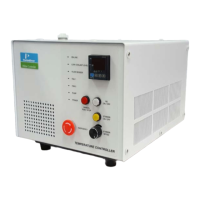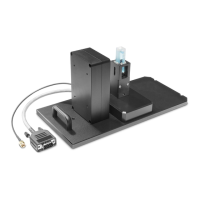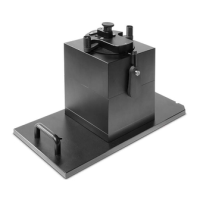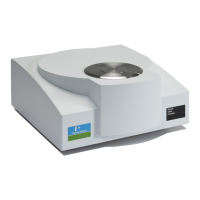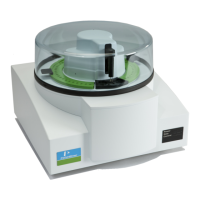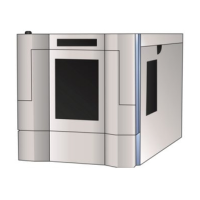Data Analysis 45
V4.2 LabChip GX User Manual PerkinElmer
How the Software Analyzes DNA Data
(Continued)
7 The standard curve and the markers are used to calculate DNA
fragment sizes for each well from the migration times measured.
8 To calculate the concentration of the individual DNA fragments
in all sample wells, the upper marker, in conjunction with a
calibration curve plotting assay-specific concentration against
base-pair size, is applied to the individual sample peaks in all
sample wells.
If a titer is being used, the ladder is not used for quantization.
Instead, peak sample areas are normalized using the upper
marker and then quantization is performed using the titer
standard curve to convert normalized area to concentration; see
“Titer” on page 328.
NOTE
The software allows you to define upper and lower markers.
Changing the markers causes quantitative changes in the
calibration procedure, however, and therefore in the entire data
evaluation.
How the Software Analyzes Protein Data
Protein assays are only supported on LabChip GX II instruments.
The LabChip GX Protein Assay Analysis consists of the following
steps:
1 Raw data is read and stored by the system for each individual
well.
2 The data is filtered (see “Data Filtering” on page 307) and the
resulting electropherograms of all wells are plotted.
3 Peaks are identified (see “Understanding Peak Finding” on
page 108) for all wells and are tabulated by migration time. The
settings of the peak find algorithm can be changed and the data
can be reanalyzed after the run has finished. (See “Reanalyzing
a Data File” on page 95.) The peak find settings can be changed
for all or only certain wells.
